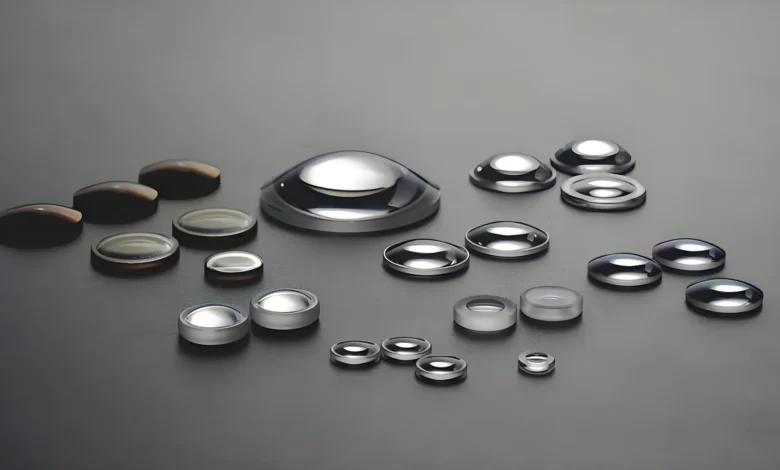Demystifying Aspheric Lenses: Properties, Applications, and Manufacturing Techniques

Aspheric lenses are revolutionary optical components that have transformed various industries due to their unique design and capabilities. In this comprehensive guide, we will delve into the properties, applications, manufacturing techniques, and What is Aspheric Lens advancements related to aspheric lenses.
Understanding Aspheric Lenses
What are Aspheric Lenses?
Aspheric lenses are optical lenses with non-spherical surfaces, unlike traditional spherical lenses. The curvature of an aspheric lens changes gradually from the center to the edge, allowing for more precise control over light rays. This design results in improved optical performance, reduced aberrations, and compact lens systems.
Properties of Aspheric Lenses
- Aberration Correction: Aspheric lenses minimize spherical aberration, coma, and astigmatism, leading to sharper and clearer images.
- Compact Design: Their ability to bend light rays efficiently enables the creation of compact and lightweight optical systems.
- Improved Performance: Aspheric lenses offer better image quality, higher resolution, and increased light-gathering capabilities compared to spherical lenses.
- Wider Field of View: They provide a wider field of view without compromising image quality, making them ideal for panoramic imaging and surveillance systems.
- Reduced Number of Elements: Aspheric lenses can replace multiple spherical lenses, simplifying optical setups and reducing system complexity.
Applications of Aspheric Lenses
Photography and Imaging
Aspheric lenses are widely used in cameras, smartphones, and imaging devices for:
- Enhanced image sharpness and clarity.
- Compact lens designs in portable devices.
- Wide-angle and fisheye lenses for expansive views.
Laser Systems
In laser systems, aspheric lenses play crucial roles in:
- Collimating and focusing laser beams with high precision.
- Minimizing aberrations for improved laser performance.
- Beam shaping and homogenization in laser processing.
Medical and Biomedical Devices
Aspheric lenses are integral components in medical equipment such as:
- Microscopes and endoscopes for precise imaging.
- Ophthalmic lenses for correcting vision aberrations.
- Laser-based medical procedures for enhanced precision.
Automotive and Aerospace
Aspheric lenses find applications in vehicle and aircraft systems for:
- Head-up displays (HUDs) for driver and pilot information.
- Automotive cameras and sensors for advanced driver assistance.
- Compact optical systems in aerospace instrumentation.
Manufacturing Aspheric Lenses
Precision Machining
Aspheric lenses are manufactured using precision machining techniques such as:
- Diamond turning: Computer-controlled machines shape lenses with micron-level accuracy.
- Molding: Injection molding or hot pressing techniques for mass production of plastic aspheric lenses.
- Glass molding: High-temperature processes to form glass aspheric lenses with complex shapes.
Metrology and Quality Control
Quality control measures ensure the accuracy and performance of aspheric lenses:
- Interferometry: Interference patterns analyze surface quality and shape accuracy.
- Surface profilometry: Measures surface roughness and irregularities.
- Optical testing: Evaluates optical performance, including focal length, aberrations, and image quality.
Advancements and Future Trends
Nanotechnology Integration
Advancements in nanotechnology enable the creation of nanostructured aspheric lenses with enhanced optical properties, such as improved light transmission and anti-reflective coatings.
Adaptive and Smart Lenses
Future aspheric lenses may incorporate adaptive and smart features:
- Variable focal length for adjustable optical systems.
- Active aberration correction for dynamic optical performance.
- Integration with sensors and actuators for autonomous optical systems.
Additive Manufacturing
3D printing and additive manufacturing techniques allow for rapid prototyping and customization of complex aspheric lens designs, accelerating innovation in optical engineering.
Sustainable Materials
Manufacturers are exploring sustainable materials for aspheric lenses, including bio-based polymers and recyclable glass, to reduce environmental impact and promote eco-friendly optical solutions.
In conclusion, aspheric lenses represent a paradigm shift in optical design and technology, offering superior optical performance, compactness, and versatility across a wide range of applications. Their continued advancements and integration into emerging technologies will drive innovation and progress in the optical industry, shaping the future of imaging, laser systems, medical devices, and more.

